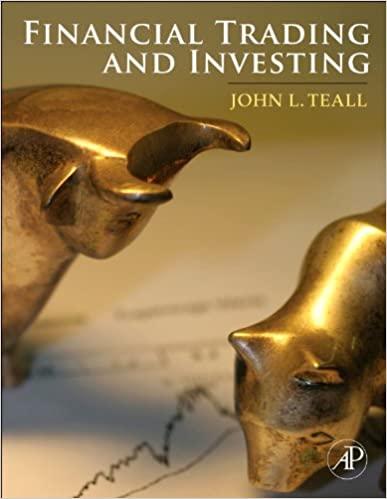Question
ANSWER TRUE OR FALSE If a firm's managers narrowly focused on creating shareholder value, but in the process the company was unresponsive to its employees
ANSWER TRUE OR FALSE
If a firm's managers narrowly focused on creating shareholder value, but in the process the company was unresponsive to its employees and customers, hostile to its local community, and indifferent to the effects its actions had on the environment; then in all likelihood society would impose a wide range of costs on the company, and this would ultimately lead to a reduction in shareholder value. True or False
A stock's intrinsic value is the value that an analyst calculates based on the best information available to him or her regarding the stock's future earnings and cash flows. Different investors have different information and different expectations for the future, hence they reach different conclusions about the intrinsic value. If the stock's market price is equal to the intrinsic value as calculated by the marginal investor, then the stock will be in equilibrium. True or False
If a large company with many employees does none of the things discussed just above, then it is likely that at least some of its employees will behave unethically. Similarly, if a university's exams are not proctored carefully, and if no sanctions are imposed on students who cheat, it is likely that some cheating will occur. Then, if some students cheat, grade pressure may cause others who want to be ethical to cheat. Thus, in both businesses and universities it is necessary for the organization to take steps to encourage ethical behavior. True or False
Suppose a company's top executives behave ethically. Also, the firm has a written set of rules regarding behavior which is circulated among all employees, and it has a good training program designed to help its employees distinguish between ethical and unethical behavior. Finally, its compensation system does not put pressure on employees to take unethical actions but does penalize employees who do not follow the rules. Such a firm's employees are likely to behave ethically, and the firm is likely to enjoy a good reputation. True or False
Which of the following is NOT an advantage of the corporate form of organization versus partnerships and proprietorships?
| |||
| |||
| |||
| |||
|
Suppose a given investment in R&D would sharply lower current earnings but greatly boost future earnings, raise the true intrinsic value, and eventually raise the market price. Assume that for competitive reasons management cannot explain the situation to stockholders. Which of the following statements would be most correct?
| |||
| |||
| |||
|
Step by Step Solution
There are 3 Steps involved in it
Step: 1

Get Instant Access to Expert-Tailored Solutions
See step-by-step solutions with expert insights and AI powered tools for academic success
Step: 2

Step: 3

Ace Your Homework with AI
Get the answers you need in no time with our AI-driven, step-by-step assistance
Get Started


